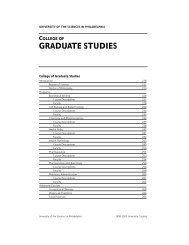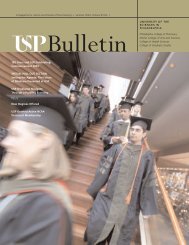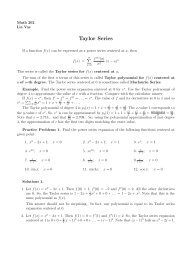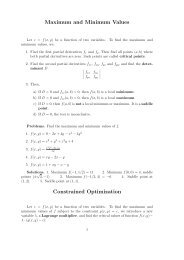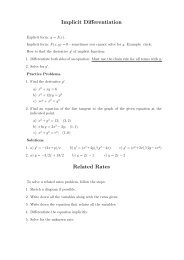SELECTION CHART FOR EYE AND FACE PROTECTION SOURCE ...
SELECTION CHART FOR EYE AND FACE PROTECTION SOURCE ...
SELECTION CHART FOR EYE AND FACE PROTECTION SOURCE ...
Create successful ePaper yourself
Turn your PDF publications into a flip-book with our unique Google optimized e-Paper software.
<strong>SELECTION</strong> <strong>CHART</strong> <strong>FOR</strong> <strong>EYE</strong> <strong>AND</strong> <strong>FACE</strong> <strong>PROTECTION</strong>The following chart provides general guidance for the proper selection of eye and face protection forhazards associated with the listed hazard “source” operations.<strong>SOURCE</strong> TYPE OF HAZARD <strong>PROTECTION</strong>IMPACT – Chipping, grinding,machining, masonry work,woodworking, sawing, drilling,chiseling, powered fastening,riveting, and sanding.HEAT – Furnace operations,pouring, casting, hot dipping,and welding.CHEMICALS – Acid andchemical handling, use ofcleaning products, paint use andclean-up products, pesticide andherbicide use.Flying fragments, objects, largechips, particles, sand, dirt, etc.Hot sparksSplash from molten metalsHigh temperature exposureSplashSpectacles with side protection,goggles, face shields. Forsevere exposure use face shieldover primary eye protection.See notes (1), (3), (5), (6), (10).Face shields, goggles,spectacles with side protection.For severe exposure use a faceshield.See notes (1), (2), (3).Face shields worn over goggles.See notes (1), (2), (3).Screen face shields, reflectiveface shields.See notes (1), (2), (3).Chemical splash goggles,eyecup and cover types. Forsevere exposure, use faceshield.See notes (3), (11).DUST – Woodworking, buffing,general dusty conditions.LIGHT and/or RADIATION –Welding: Electric Arc.WELDING: GasIrritating mistsNuisance dustOptical radiationOptical radiationSpecial-purpose goggles.Goggles or spectacles with sideprotection.See note (8).Welding helmets or weldingshields. Typical shades: 10-14.See notes (9), (12).Welding goggles or welding faceshield. Typical shades: gaswelding 4-8, cutting 3-6, brazing3-4.See note (9).WELDING: Torch brazing,Torch soldering.Optical radiationSpectacles or welding faceshield. Typical shades: 1.5-3.See notes (3), (9).GLARE Poor vision Spectacles or welding faceshield. Spectacles with shadedor special-purpose lenses, assuitable.See notes (9), (10).
NOTES TO <strong>EYE</strong> <strong>AND</strong> <strong>FACE</strong> <strong>PROTECTION</strong> <strong>SELECTION</strong> <strong>CHART</strong>1. Care should be taken to recognize the possibility of multiple and simultaneous exposure to avariety of hazards. Adequate protection against the highest level of each of the hazardsshould be provided. Protective devices do not provide unlimited protection.2. Operations involving heat may also involve light radiation. When necessary, protection fromother hazards must be provided.3. Face shields should only be worn over primary eye protection (spectacles or goggles).4. Filter lenses must meet the requirements for shade designations as outlined in the OSHAregulations and ANSI standards. Tinted and shaded lenses are not filter lenses unless theyare marked or identified as such.5. As required by the standard, persons whose vision requires the use of prescription lensesmust wear either protective devices fitted with prescription lenses or protective devicesdesigned to be worn over regular prescription eyewear.6. Wearers of contact lenses must also wear appropriate eye and face protection devices in ahazardous environment. It should be recognized that dusty and/or chemical environmentsmay represent an additional hazard to contact lens wearers.7. Caution should be exercised in the use of metal frame protective devices in electrical hazardareas.8. Atmospheric conditions and the restricted ventilation of the protector can cause lenses to fog.Frequent cleansing may be necessary.9. Welding helmets or face shields should be used only over primary eye protection (spectaclesor goggles).10. Non-sideshield spectacles are available for frontal protection only, but are not acceptable eyeprotection for the sources and operations listed for “impact”.11. Must provide adequate ventilation (indirect ventilation holes) and also protect the wearer fromsplash entry. Eye and face protection should be designed and used so that it provides bothadequate ventilation (indirect ventilation holes) and protects the wearer from splash entry.12. Protection from light radiation is directly related to filter lens density. See note (4). Select thedarkest shade that allows the task to be performed.






